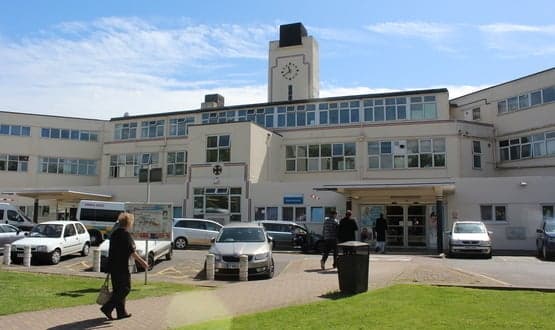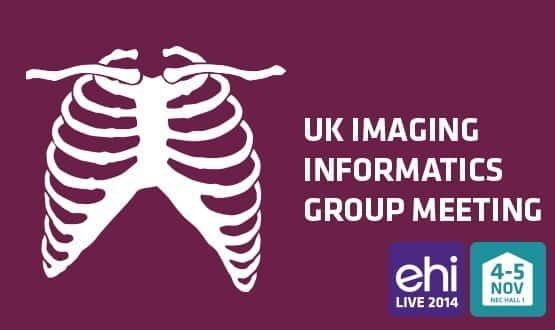Chicago, Now!
- 10 December 2013

Radiological Society of North America held its annual meeting in Chicago at the start of December.
As ever, the vast event included plenty for those with an interest in imaging informatics, from explorations of cutting edge of technology (the use of 3D printing in imaging) to more bread-and-butter issues of everyday practice (such as peer review).
Technology as a tool for personalisation
There was no doubt that additive manufacturing – or 3D printing, as it is more popularly known – was the stand out, ‘whizzy’ technology that captured everybody’s imagination at the event.
Newspapers and magazines have been full of features about 3D printing this Christmas. As anybody who has read about its ‘arrival on a high street near you’ will know, it enables physical objects to be built up layer by layer from three-dimensional computerised images.
The popular features have focused on journalists making images of themselves, or having a go at creating their own Christmas presents. More seriously, 3D printing is now standard in the automotive and airline industries; but the idea that it could be used in medicine is relatively new.
One session at RSNA heard from Dr Michael Steigner, a cardiovascular radiologist at Brigham and Women’s Hospital. He explained that images could be used to create a physical representation of a human organ, providing surgeons with a more accurate guide before carrying out a complex operation.
The technique could also be used to plan radiotherapy treatment, because of its accurate representation of tumour boundaries. Substantial limitations of cost and practicality have to be overcome before 3D printing becomes a routine part of clinical practice, however.
An exciting new field, radiogenomics, integrates medical images and genomic data, with the aim of helping doctors achieve a better understanding of critical disease processes.
Dr Daniel Rubin, an assistant professor of radiology at Stanford University, said the goal was “precision medicine”: by mining biological and medical data it should be possible to work out which patients are most likely to respond to particular treatments.
The creation of a big public database of DICOM images annotated with genomic information would allow others to run algorithms that could show which medicines worked with which genomic patterns. Radiogenomics could become “a non-invasive way of tailoring individual treatment,” Dr Rubin said.
Meaningful use
If the sessions on cutting edge technology got delegates excited, then the spectre of regulation brought many sessions back down to earth, as regulatory bodies continue to place demands on clinical practice.
In the US, the Health Information Technology for Economic and Clinical Health Act (2009) encourages the use of IT systems to promote safety, quality and efficiency in healthcare. Hospitals are offered financial incentives to adopt electronic health records and use them to achieve specific objectives that fall under the umbrella of “meaningful use”.
In response to HITECH, many healthcare providers are now looking at ways to share healthcare information, such as radiology images, and to provide patients with access to their own records.
Several sessions looked at how electronic health records could be used to create a more efficient workflow and a more patient-centric health service.
In one, Keith Dreyer, vice chairman of radiology, Massachusetts General Hospital, argued forcefully that a lack of good IT infrastructure meant that hospitals were failing patients. “We are the most expensive nation of our peers for providing healthcare, and we don’t even do it that well,” he said. “People die because of our errors.”
In the same session, Dr Cree Gaskin, an associate professor of radiology at the University of Virginia, said that when his department switched from a PACS-driven workflow to an EHR-driven workflow, it saw a significant improvement in report turnaround times.
The use of the EHR provided radiologists with faster access to patient demographic clinical data, making protocolling “easy and fast”, he said.
In a session looking at next generation infrastructure, Dr Paul Chang professor of radiology at the University of Chicago, explained how the development of IT systems that worked together seamlessly – as in the Amazon model – could vastly improve the efficiency of a radiologist’s workflow.
Radiation dose monitoring
Radiation dosage emerged as the next likely candidate for regulation. In the wake of two notorious cases of hospitals administering overdoses of radiation four years ago, California passed legislation requiring radiologists to record dosage from every CT study performed.
Other states are likely to follow suit, while European Union member states are also facing new dose monitoring legislation, in the form of a revision of the EU’s Basic Safety Standard Directive.
One session at RSNA looked at the practicalities of implementing a dose monitoring system. Kevin O’Donnell, a senior manager at Toshiba, said that the IHE radiation exposure monitoring profile, an architecture for capturing and managing dose data, had been widely adopted among modality vendors.
Even with legacy modalities, however, it was possible to extract data by creating REM objects based on optical character recognition scan of dose screens.
He urged radiologists to use the IHE REM to collect and analyse CT dose data and to submit it to the American College of Radiology’s dose monitoring index, which will then be used to establish national benchmarks for CT dose indices.
Putting the patient at the centre
The challenge of how to share radiology images between different hospitals is a hot topic in the US, as in the UK. NHS trusts have adopted a national solution through the Image Exchange Portal, which will soon include the ability to share documents as well as images.
But efforts in the US have been on a smaller scale. At a “town hall” meeting, delegates heard about RSNA Image Share, a network that allows patients at participating hospitals to access to their own images, which they can then share with other healthcare providers.
William Heetderks, associate director of science programmes at the National Institute of Biomedical Imaging and Bioengineering, said that he hoped that healthcare would eventually “move towards a patient-centred image system where imaging information and other healthcare data follows the patient wherever they are.”
A number of legal hurdles, mainly relating to privacy, have to be passed to allow image sharing to happen – but given that a proportion of patients involved in a research study admitted to uploading their personal images to Facebook, perhaps concerns about privacy are misplaced.
Improving practice
Several speakers looked at the merits of structured reporting. In a debate entitled “Is structured reporting the answer?” Dr Curtis Langlotz, professor of radiology at the University of Pennsylvania, argued that the use of standard terminology and headings could save life by adding clarity and removing ambiguity.
It was a point expanded on by Dr Joseph Steele, professor of diagnostic radiology at the University of Texas, who said that structured reporting could become a powerful tool that allowed clinicians to observe correlations between data on procedures and later complications, and thus create standardised procedures based on best practice.
Dr Steele was speaking at a session on peer review, which looked at how peer review could be used to improve patient care rather than as a punitive tool for identifying underperforming radiologists.
Delegates also heard from Dr David Larson, who described an alternative, anonymised method of peer review, developed at Cincinnati Children’s Hospital, which helped radiologists improve their own practice by asking questions such as: “What techniques have I learnt that I can use to defend myself against doing this?”
In a conference that covered a diverse range of topics, a unifying theme was the gathering and sharing of data on a large scale.
Large datasets can be used to create significant improvements in clinical practice, whether it’s by lowering radiation dose, identifying the safest ways of carrying out interventional procedures or correlating genomic and imaging data to create personalised cancer treatments.
The days of radiologists practising as “lone rangers”, to use Dr Steele’s term, may be numbered. But it will still be a while before they’re all busy 3D printing.




